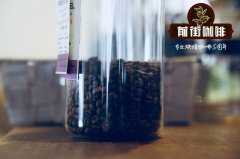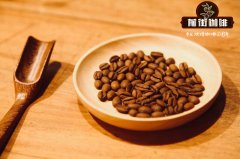Yemeni coffee Madali varieties of boutique coffee beans characteristic flavor Yemeni coffee brewing method how to drink

Professional coffee knowledge exchange more coffee bean information please follow the coffee workshop (Wechat official account cafe_style)
It is also located on the Arabian Peninsula of the Asian continent, but it is very close to Africa just across the Red Sea and the Gulf of Aden Gulf of Aden, but other Arab countries do not produce coffee, so the world classifies Yemeni coffee as a member of the North African coffee family. So what is the Yemeni mocha?
Mocha is the export port of Yemeni coffee, because it is difficult to name all the tiny sub-producing areas in the history of the coffee trade, even though the coffee produced by these small producing areas is indeed very good. So the sun beans near the place of export, including East Africa, were exported from the port of Mocha to all parts of the world in the early days, and now the port of Mocha has long been silted up and disappeared. Many Ethiopian sun beans also name themselves mocha, such as Haramoka, which we know well. I think this is because its flavor has something in common with Yemeni coffee.
The most correct spelling of mocha coffee should be Al-Mahka, which is the Arabic spelling, but in the end, what you see on the sack is the correct spelling of Mocca or Mocha, regardless of some naming and spelling trivialities, Yemeni coffee is the most unique and expensive coffee in the world, the overall style of [wild] or [natural] coffee flavor is extremely complex, for some people it is spicy and pungent. But in any case, you must try it sometime, if you also fall in love with him deeply, it will be the beginning of a new coffee journey.
Yemen is probably the first country in the world to use coffee as a cash crop. It is said that coffee was introduced by Muslim Sufi pilgrims from Ethiopia in the 6th century. Yemeni coffee culture is different from other regions. Exporters do not buy directly from the farm, but from the middle market dealers, and the coffee received by the local market merchants contains pods. The whole dried coffee cherry is usually stored in the cellar, and the special flavor of the world's favorite Yemeni coffee may come from their ancient way of trade. Yemeni coffee farmers have not suffered from trading through the market. The main reason is that the local coffee cultivation land is limited, coupled with high latitudes and limited water resources, its production is very scarce, and the demand for Yemeni coffee is very high. Keep the price of Yemeni coffee high.
It is not easy for Yemeni coffee to grow and harvest most farmland plants are said to have a mild and refreshing effect of katgrass, which absorbs water from the ground and breaks the underground aquifer. Growing coffee is different in the hope that some changes can be made. to make farmers stop growing cat grass.
Yemen Mokamadali Yemen Mocca Matari
■ countries: Yemen
■ producing area: Bani Matar
■ altitude: 2000-2400 m
■ treatment: insolation
■ Variety: Madali
■ flavor description: full and thick, woody, wine, juice, berries, dried fruit, dried longan and tobacco, smoky finish
Madali is the best-known coffee bean in Yemen. It is located in the Bani Matari, west of the capital Sana'a. It has a strong, thick flavor with a distinct berry flavor.
-Hami Yemeni Moka Hami Yemen Mocca Haimi
■ countries: Yemen
■ producing area: Al-Haimah
■ altitude: 1500-2200 m
■ treatment: insolation
■ variety: Hami
■ flavor description: Wood, fresh pods and other plant flavors, with chocolate and cream flavor, quite clean
Recommended parameters for coffee brewing in Qianjie:
1. Filter cup: V60
two。 Water temperature: 88 degrees
3. Degree of grinding: small Fuji degree of grinding 4
4. Baking degree: medium baking
5. Steaming time: 25 seconds
Flavor: balanced, chocolate, long-lasting caramel sweetness
Qianjie Coffee suggestion: 15g powder, 4 grinding of small Fuji ghost tooth cutter, V60 filter cup, 88-89 degrees water temperature, 30g water injection for the first time, 25 s steaming, water injection to 104g water cut off, wait for the amount of water in the powder bed to go down to half and then water injection, slow water injection until 220g water, 5 grams at the end, no water powder ratio at 1:15, extraction time about 2:00 (calculated after stewing)
Related recommendation: description of Yemeni coffee flavor and taste characteristics is Yemeni mocha coffee good?
Important Notice :
前街咖啡 FrontStreet Coffee has moved to new addredd:
FrontStreet Coffee Address: 315,Donghua East Road,GuangZhou
Tel:020 38364473
- Prev

Yemeni coffee, the originator of coffee trade, Yemeni mocha coffee roasting and brewing flavor.
Professional coffee knowledge exchange more coffee bean information please follow Coffee Workshop (Wechat official account cafe_style) Yemen Mocha Mattari Yemen Mocha Matali Yemen Mocha Mattari Yemen Moka Country country: Yemen Yemen Region Origin:: Matali Mattari Altitude altitude: 1300 '1900m Varietal varieties: Typic
- Next

The unique flavor of natural sun-tanned Yemeni coffee describes what real Yemeni coffee tastes like.
Professional coffee knowledge exchange more coffee bean information Please follow the coffee workshop (official Wechat account cafe_style) although the trend of boutique is the revival of "technology replacing machinery", the market is still inseparable from the supply and demand.
Related
- Detailed explanation of Jadeite planting Land in Panamanian Jadeite Manor introduction to the grading system of Jadeite competitive bidding, Red bid, Green bid and Rose Summer
- Story of Coffee planting in Brenka region of Costa Rica Stonehenge Manor anaerobic heavy honey treatment of flavor mouth
- What's on the barrel of Blue Mountain Coffee beans?
- Can American coffee also pull flowers? How to use hot American style to pull out a good-looking pattern?
- Can you make a cold extract with coffee beans? What is the right proportion for cold-extracted coffee formula?
- Indonesian PWN Gold Mandrine Coffee Origin Features Flavor How to Chong? Mandolin coffee is American.
- A brief introduction to the flavor characteristics of Brazilian yellow bourbon coffee beans
- What is the effect of different water quality on the flavor of cold-extracted coffee? What kind of water is best for brewing coffee?
- Why do you think of Rose Summer whenever you mention Panamanian coffee?
- Introduction to the characteristics of authentic blue mountain coffee bean producing areas? What is the CIB Coffee Authority in Jamaica?

